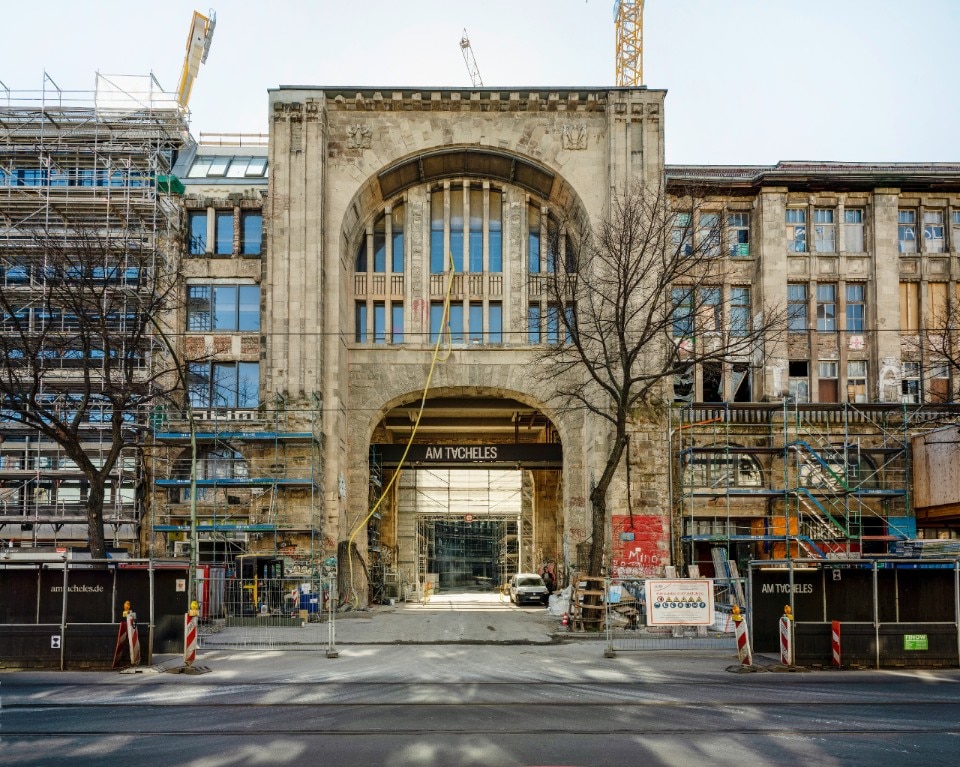by Noel Nicolaus
There are places that encapsulate the spirit of an era more profoundly than others, evolving into enduring symbols. In the early 1990s Berlin, one such place undoubtedly was Tacheles: a vast turn-of-the-century shopping arcade – or rather, what remained of it after East German authorities commenced its demolition – then occupied in 1990 by a vibrant handful of activists and artists, it later transformed into an alternative icon of the capital. The story came to an undistinguished close in 2012, with a subdued eviction and unexpectedly feeble resistance.
The rebirth came in the fall of 2023, unveiling what was once Tacheles in its new form. No longer an artists’squat, but a private photography museum – a branch of the renowned Scandinavian brand Fotografiska – complete with a bookstore, bar, café, and restaurant. It’s a transition loaded with symbolism, particularly in a city like Berlin, known for its constant urban transformations.
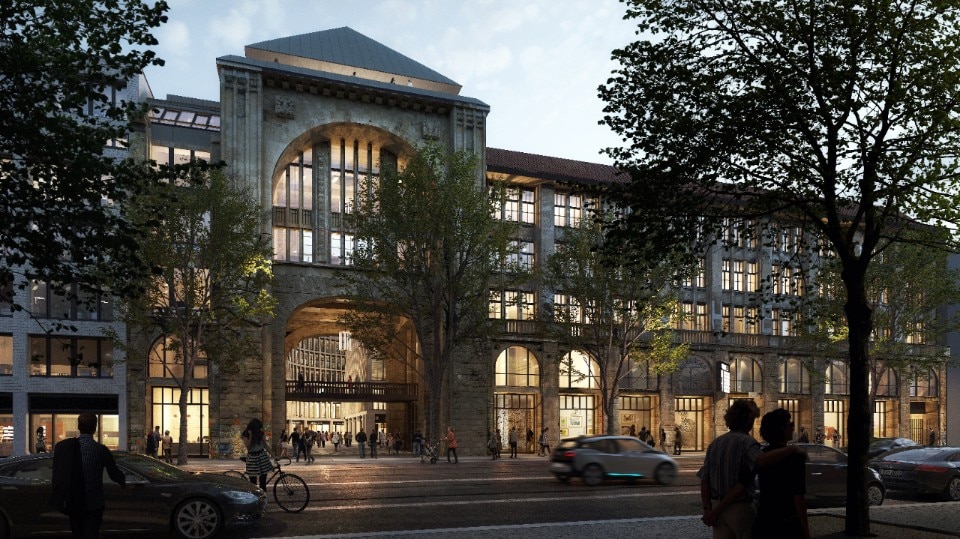
Birth of an Icon
To grasp why there’s been such extensive discussion and controversy surrounding a nearly empty building for over a decade, it’s essential to revisit the origins of Tacheles, starting with its historic occupation in 1990.
Less than a year had passed since the fall of the Wall, and the two Germanies hadn’t yet reunified. As the German Democratic Republic collapsed due to its internal contradictions and economic frailty, a power vacuum emerged in East Berlin. It was the short “summer of anarchy”, during which 12 buildings on Mainzer Straße in Friedrichshain were simultaneously occupied, and the area around Oranienburger Tor was teeming with makeshift bars and clubs. The city was gripped by a collective euphoria, where anything seemed possible.
During this unique and unrepeatable moment, Tacheles came into being: scarcely more than a ruin, it was taken over by a group of artists with the mission of preventing its final demolition.
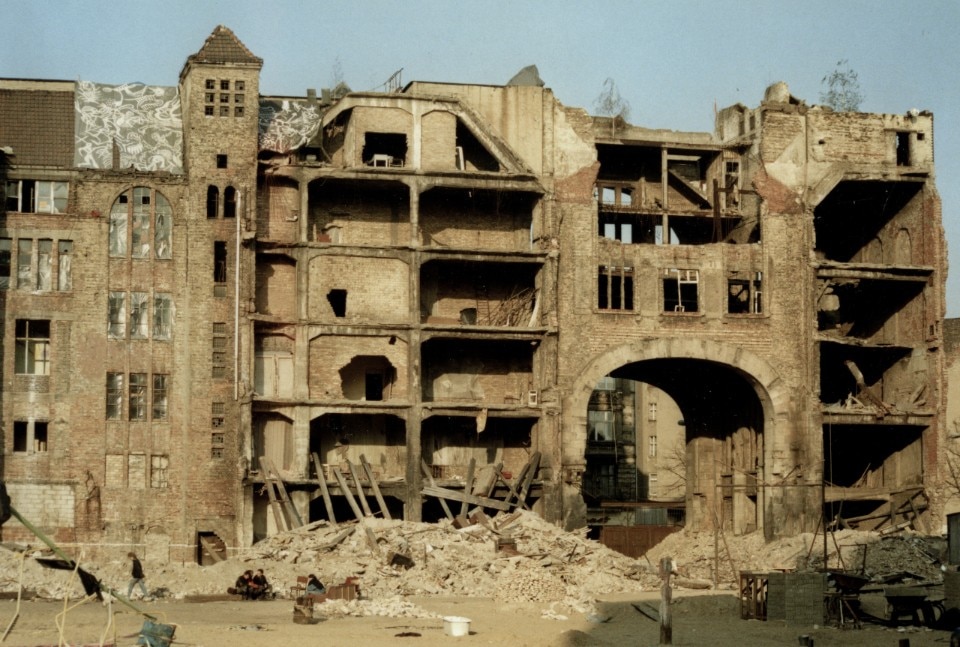
During this unique and unrepeatable moment, Tacheles came into being: scarcely more than a ruin, it was taken over by a group of artists with the mission of preventing its final demolition by the GDR authorities. One key figure in this phase was Jochen Sandig. Like many of his contemporaries, Sandig, hailing from the affluent and conservative state of Baden-Württemberg, was drawn into the whirlwind of Berlin and, as a student, found himself becoming a spokesperson for Tacheles. He is credited with naming the initiative. The term Tacheles is Yiddish, paying homage to the longstanding Jewish history of the surrounding neighborhood (the historic synagogue with its golden dome is just a few hundred meters away). “Speaking Tacheles” means “to speak frankly”, to express things clearly. It also embodies the intentional stance of its promoters: here, they aimed to create art from the grassroots, free from bureaucracy, taboos, or academic constraints.
For a few years, Sandig and his companions succeeded in fulfilling this promise. While the interior of the building gradually became functional, housing bars, clubs, concert halls, a cinema, and over 30 studios, the vast empty space behind the building was transformed into a sculpture garden and performance area. Within months, even official politics and mainstream media began to express fascination with this peculiar artistic experiment, hosted by what some were already dubbing “the largest squat in Europe”. Thus, the myth of Tacheles was born.
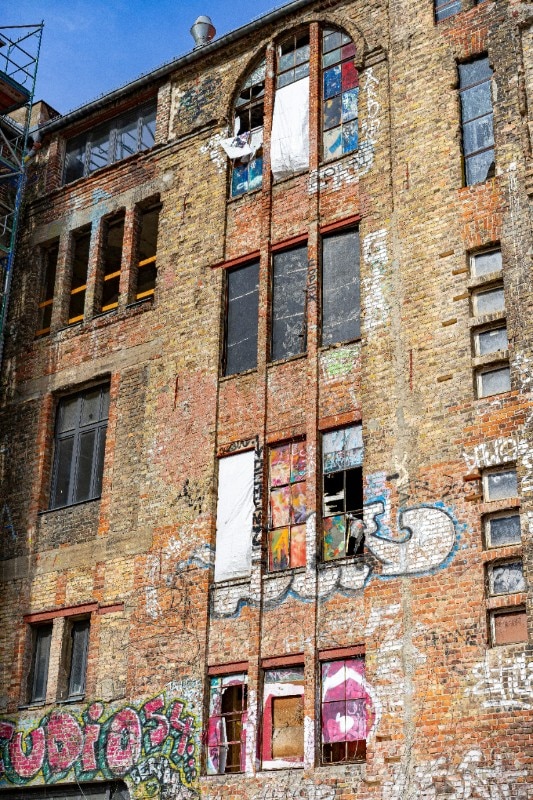
The Slow Decline
As often happens, success brings along new challenges and contradictions. From a sanctuary of counterculture, Tacheles turned into a tourist hotspot. This sparked a growing rift between the so-called Gastrofraktion, referring to the “gastronomic faction” of the bars and clubs within Tacheles, and the artists themselves, who accuse the former of commercializing the initiative.
Simultaneously, the surrounding neighborhood undergoes rapid transformation. Improvised clubs and galleries, adorned with makeshift furniture and scrap sculptures, give way to chain hostels and plain coffee shops. The “scene” now seems to favor other neighborhoods, such as the multicultural Neukölln. Finally, in 2012, the eviction.
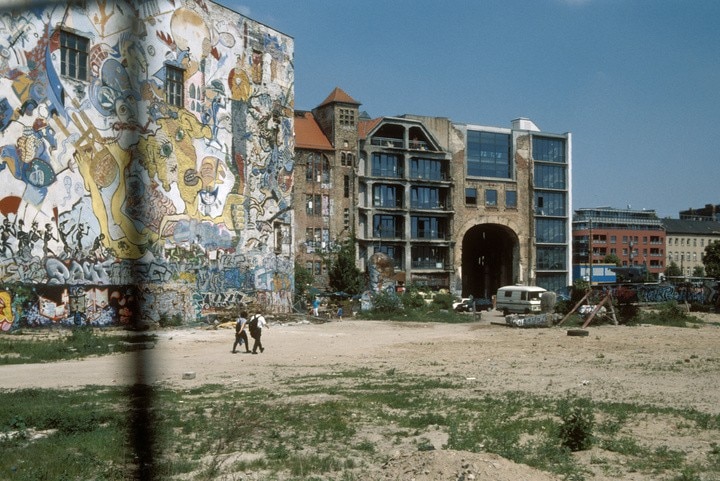
Death and Revival
Tacheles had officially come to an end. However, its legacy lived on, transitioning from the depths of underground culture to the heights of global finance Olympus. The new owners of the area, affiliated with the New York investment fund Perella Weinberg Partners, recognized the brands historical significance and opted to leverage the name “Tacheles” for their own marketing goals. Swiss stararchitects Jacques Herzog and Pierre de Meuron were enlisted to reimagine the area, crafting a master plan that appeared intelligent and respectful on paper, yet upon closer inspection, revealed a shrewd and somewhat cynical nature. The proposed designs evoked memories of the old shopping arcade, the Friedrichstadtpassagen, and featured a small octagonal square where a vast glass and steel dome once stood. Broad concrete pathways, adorned in project renderings with lush hanging plants, wove through the spaces, connecting the various areas. To complete the design team, Berlin-based Grüntuch Ernst and Brandlhuber+ Muck Petzet contributed, while Vogt Landschaft oversaw the exterior spaces.
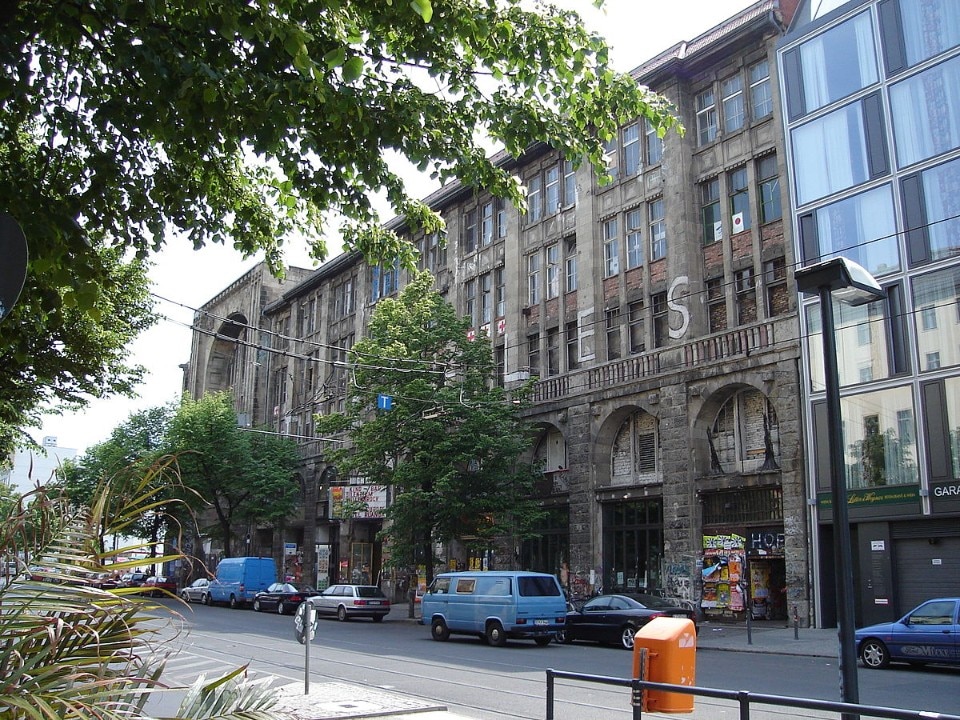
Rebirth
Most of the complex is now completed and open to the public. Forming a first impression without a hint of nostalgia is hard. The new plazas and galleries crafted by Herzog & De Meuron boast the classic styles of the Swiss firm: adept use of materials (like hand-broken bricks to create a rough, animated effect on the surfaces), bronzed brass finishes, and meticulously crafted, high-quality concrete. The other buildings also appear convincing at first glance, with Brandlhuber in particular confirming his local reputation as a neo-Brutalist master. Yet, strolling through these empty spaces characterized by clean lines, it’s hard not to recall Johannes Novy’s words. In one of his articles on the new Tacheles, the German sociologist evokes the concept of “zombie urbanism”: an “undead” urbanism that mimics the spaces of the historic city but fails to replicate its essence. Certainly, the average apartment prices – hovering around 15 thousand euros per square meter – do little to dispel this impression.
Herzog & De Meuron treated the building’s ‘shell’ as a precious historical artifact, preserving its many layers.
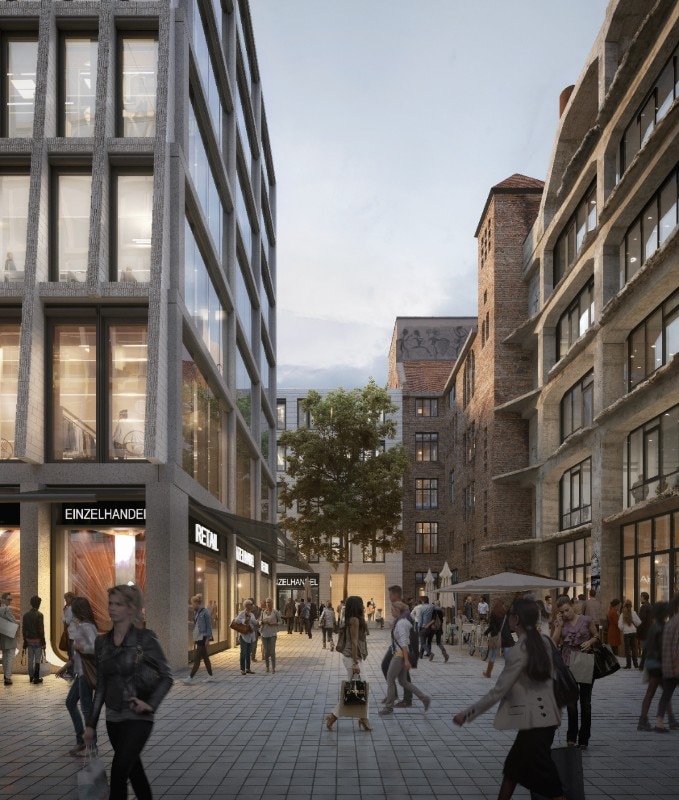
Tacheles has turned into Fotografiska, becoming the fifth location of the renowned private photography museum, following the original in Stockholm and branches in Tallinn, New York, and Shanghai. Herzog & De Meuron treated the building’s “shell” as a precious historical artifact, preserving its many layers – from the scars of war to the vibrant graffiti of the 1990s and 2000s. It is especially the latter that evoke, in those familiar with the “old” Tacheles, an inevitable sense of alienation, which even Werner Aisslinger's expert interior design fails to reconcile. Particularly on the upper floors, such as in the restaurant “Veronika”, the new spaces showcase their full potential and allure, emerging as contenders for the new, chic living room of a less underground Berlin Mitte.
A Missed Opportunity?
Fotografiska’s portfolio is undoubtedly impressive, albeit occasionally predictable; the curation of the collections demonstrates a commendable attention to the nuances of the Berlin scene.
However, it is the gastronomic experiences that truly shine in the “new” Tacheles: both in the aforementioned Veronika restaurant and in the two bars and café, visitors can appreciate the unmistakable touch of Yoram Roth, president of Fotografiska Berlin and investor and co-owner of well-known Berlin establishments like the renowned club “Kater Blau” or the historic “Clärchen's Ballhaus”. There's a certain irony in the delineation between art and gastronomy, with the latter explicitly tasked with funding the former, echoing the old Tacheles dichotomy between artists and the Gastrofraktion.
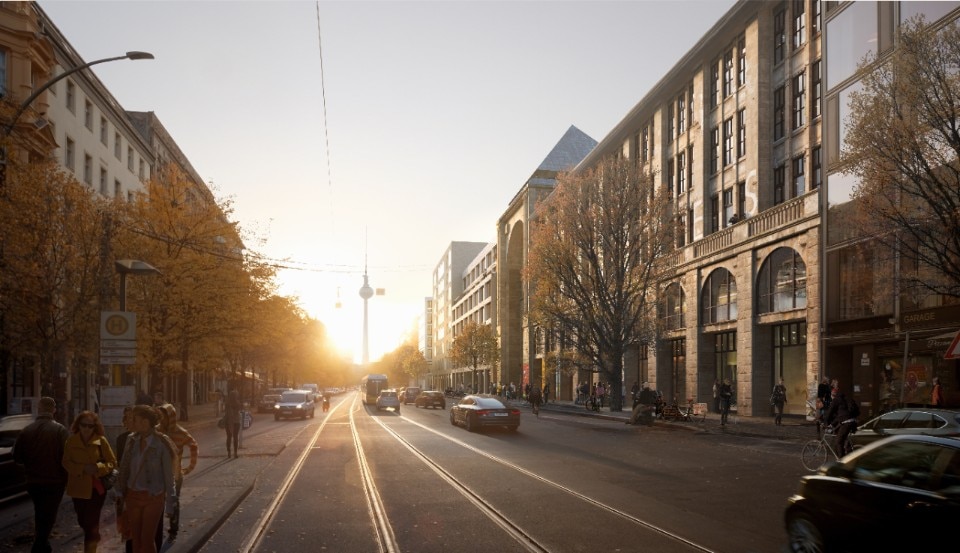
For now, doubts linger regarding whether an opportunity has been missed – yet another, according to the most critical observers – in a city that has long benefited from its reputation for cultural openness and sophistication, only to be met with urban development that often veers towards the banal and uninspired. Ultimately, there’s nothing left but to concur with the succinct observation of the daily “Süddeutsche Zeitung”, which suggests that with the transformation of Tacheles, the mythical “Post-Wende” era of Berlin Mitte can officially be declared over.
Opening image: Courtesy Am Tacheles


